The Best Educational Technology Of 2020 & 2021
Need Additional Materials For The School Year Ahead? Read On...
- Last Updated Jan 7, 2021

The past few months in the world of education have been hard hit by all kinds of external influences that have had a drastic impact on the way that children (and adults) learn.
So, with that in mind its always good to remain receptive when it comes to adopting new forms of technology into your classroom. Whether it be hardware or software there are always all kinds of different technologies emerging onto the EdTech scene – so let’s have a look at the best educational technology out there, and how it can help you and your classroom this year.
USB Microscopes
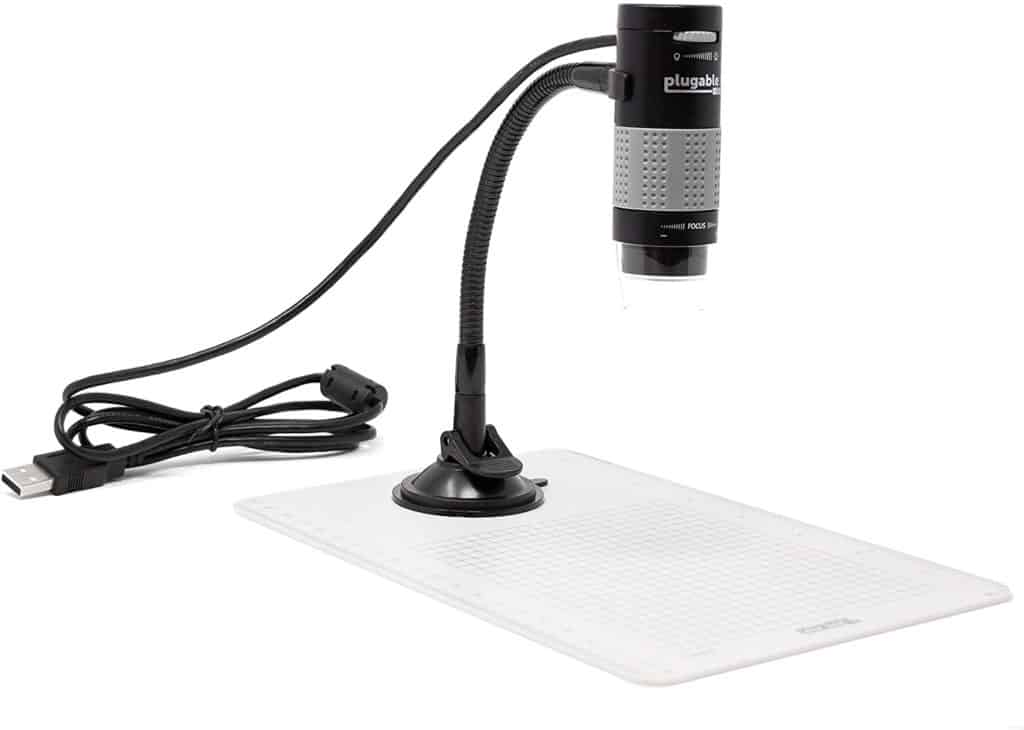
Now, when it comes to teaching science it can be hard to keep a class of thirty plus children engaged with you, especially if you are describing something microscopic via the help of still images. That can definitely have a damping effect on student engagement and concentration levels.
So, one tip that my teacher friends have passed me is that if they can demonstrate something – they will. So, enter the USB microscope.
Whilst you might not rely on these microscopes for actual scientific or biological readings, they are fantastic tools for keeping your class engaged as you examine certain elements in your classes. Sure, the prices can range from a reasonable amount (like around $40) to drastically high (we won’t go there), but even the lower-priced options are going to give you some versatility when it comes to giving demonstrations in science class.
In fact, most of the USB microscopes available today are capable of much more than just live feedback of what the user is viewing. Some are capable of recording video even up to 1080p clarity, meaning that if you have a particularly good demonstration that you would like to use in future classes then it’s going to be right there waiting for you when you need it.
Basically, if you are looking for a way to make your science classes a little more visually engaging, then this is the way to be doing it.
Classroom Visualizer
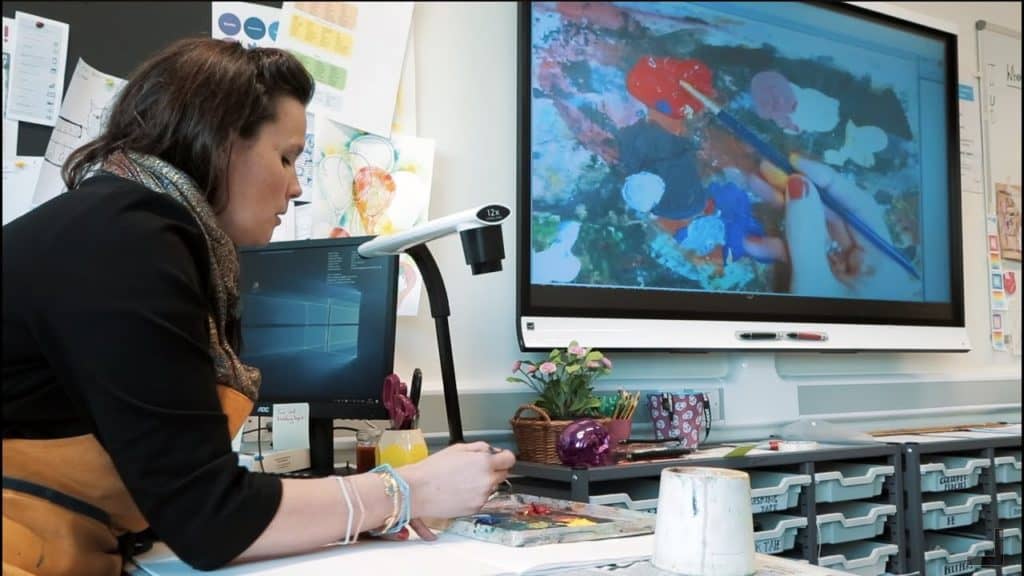
What if though, you aren’t teaching science but you still want a way to teach students whilst offering close up looks at different passages of workbooks, textbooks, or problems? Well, in this situation you would need a visualization tool so that you can go through these things in detail.
These are basically cameras that function as a way of transposing text or images onto the board so that the entire class can look for themselves at what you are talking about. It’s handy for things like marking workbooks for peer assessment, demonstrating complicated practical techniques or even just drawing attention to certain problems or areas of text that require close reading, that would otherwise require going from student to student in order to make them understand.
Nowadays though, we have to think about the wider ramifications of at-home learning, and if teachers are pushed to it, the kind of technology that can sustain and develop students from inside their homes, and this is where a visualizer really shines.
By allowing a visualizer to take the place of your video feed on a Zoom (or any kind of video call) you are going to be able to take your lessons close up to your pupils, highlighting sections and problems that might have otherwise impossible to perform on a regular webcam.
Basically, even something like this HUE HD Portable USB Camera is going to provide a teacher with an ability to share more materials with their students, easily, both in and out of the classroom.
Hearing Assistance
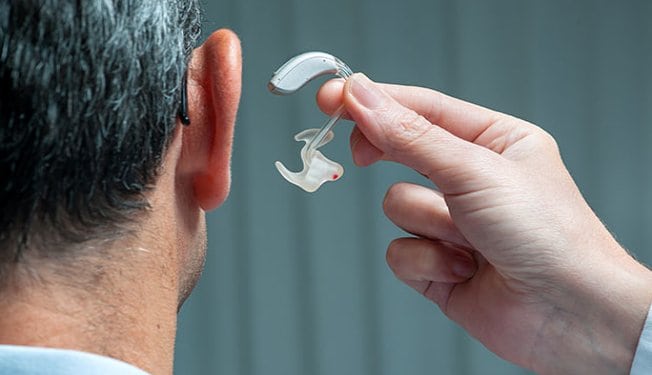
It’s no secret that some students are differently-abled to others and that sometimes individual students will need a little more help in understanding and comprehending their teacher than other students might – if they have a hearing aid, for example, it can be difficult for a student to make out clearly what points a teacher is attempting to drive home in their lessons.
So, a solution to this problem could be appreciated if at all possible, right? That’s where hearing Assistive Technologies come into play. These different forms of tech allow for teachers to harness technologies to allow their voice to be easier carried to those students in their class who might have more difficulty in hearing them.
There are a couple of ways that these can work – a common solution is for teachers to wear a small microphone that can transmit sounds to students’ hearing aids connected via the FM band.
This is a good solution if you are looking for something to use from the front of the classroom – but sometimes you (and your school) will want a more personalized solution for a student to use in every classroom, not just yours – and that’s where something like a directional microphone can come in very handy.
Rather than a microphone used by a teacher that connects to a students hearing aids, this is a directional microphone that amplifies the noise of whatever it is pointed at – a much more portable solution favored by some students thanks to the fact there is no setting up hassle between lessons. Something like this Bluetooth microphone from Alead Nolan would do the trick well – but there is a (possibly lower-tech) option I haven’t discussed yet.
It’s no secret that lots of students walking through the doors of any school are going to have a smartphone in their pocket, and via the use of a lapel microphone, it is possible for students to use their smartphone to tune into your broadcasting signal so that they can better understand the content of your lessons.
An easy way to do this (without having to give out a phone number to your students) is to set up a Google Meet via your school email address, and to then have your audio input be set to the lapel microphone you have feeding into your phone. You then invite whichever students you feel would best benefit from having some audio assistance to that Google Meet phone call, mute their respective inputs, and carry on with your lesson. Hey presto, an ad-hoc broadcasting system to help out those who need it in your classroom.
Tablets
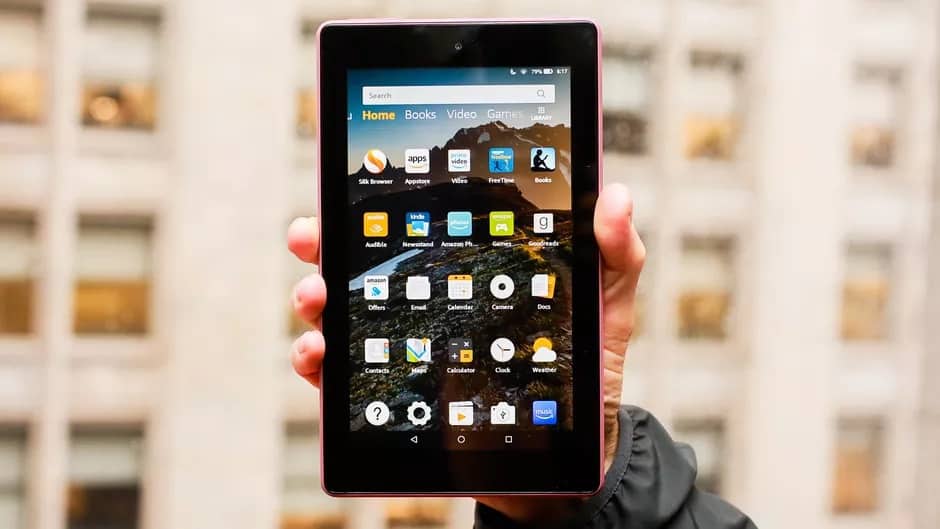
Tablets might have seen like a massively expensive option in the past, but now they are much more achievable thanks to the prevalence and overall acceptance of technology in the classroom. If price is your first concern when it comes to getting tablets into your classroom, then stop worrying – the Amazon Fire 7 is a very affordable option when it comes to using tablets in the classroom, that’s definitely powerful enough to run some of the different apps I will talk about when it comes to software – plus it has different options for SD card storage, so if you do find that you need to add in a little bit of extra memory the option is there for you to do.
But, what is the actual point of having a tablet in the classroom? Well, right off the bat I can link a tablet to the last section of this article, and say that they can aid students with hearing difficulties comprehend what’s being said around them. Whether this is through the tablet acting as a table microphone so that hearing-impaired students can better understand the talk of the group when group tasks are necessary, or if they need it, act as a voice to text app so that any students with hearing difficulties can refer to a transcript of a conversation rather than having to rely purely on audio feedback.
That’s just one area that tablets can help within the classroom through – the en-masse applications of a tablet are much more versatile.
You might be able to expect much readier and eager participation in sections of your lessons that require it, thanks to the fact that tablets allow for instant and semi-private wats for students to participate – meaning that even the more reserved students can get involved.
You can also share documents, workbooks, and specialized question sheets through a tablet so that every desk and group of students is looking through the same sections and materials as everyone else – and these workbooks are easily replicable and reusable thanks to them being digital.
The big draw of a tablet though is that it allows the widespread use of apps and teaching aids in your classroom without having to rely on students’ own resources. Basically, a tablet like the Amazon Fire 7 that’s connected to an app store is going to offer a lot of different resources to you that might not be available to you otherwise.
Google Drive
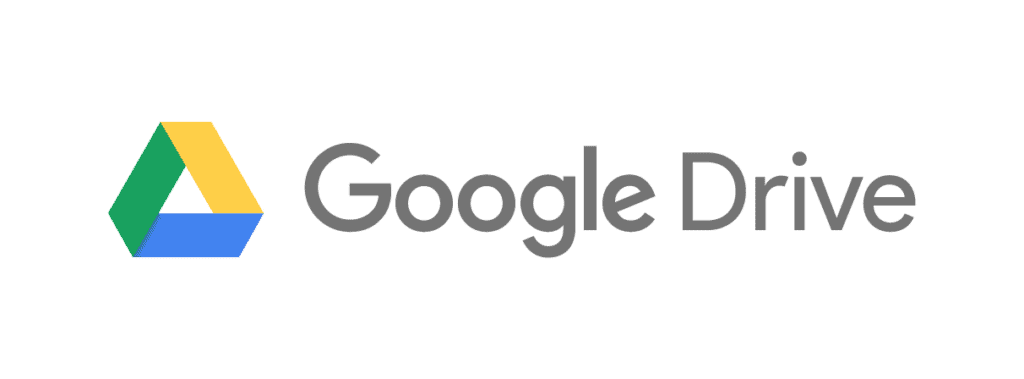
Without over-complicating things, Google Drive is a great place to start when it comes to the best Edech in 2020. Why? Well, lets list out some of Google’s principle features, and how they might correspond to education.
First, you have Google calendar. Link this up with your students desired (or school) email address, and they are no longer going to have any excuse for not forgetting homework assignments or to bring in whatever materials required of them on specific dates – Google calendar keeps track of whatever events you stick into it, and can send reminders to your students on specific dates as well just to help give them that extra nudge in completing their homework.
Then you have the likes of Google Docs, Google Sheets, and Google Presentation – all free internet browser-based applications that allow users to write up documents, complete spreadsheets, and form presentations. Now, these have two main advantages to them.
The first is that all of these applications allow for collaborative working, so if you have a group of students working on a group project and you are worried about their ability to work together even when getting together is prohibited, these applications are going to make it much easier for a group to work on one document. Plus, if you have students looking for live feedback on their work, you can always dip in to leave comments and suggestions on their work ahead of the hand in date, which will of course be fed back to the student(s) in real-time.
The second big advantage to these applications is that students can share their finished projects with you directly via email, meaning that come submission day you can have all of your students work ready to access on your home or work computer – it really is that simple.
Of course, if you don’t want to have your email flooded with different submissions you could always set yourself up an actual Google drive for your different classes, each with their own submission folders tailored to each assignment, as a way of keeping things organized. This way you can keep an easy track on who has, and who hasn’t handed in their work, and it has the added benefit of accepting files other than just Google Docs and they’re like – meaning that students can submit their work in whatever digital format they might choose.
Quizzizz

Quizzizz is exactly what it says in the title – it’s a quiz app that’s brilliant to use in the classroom for when class participation is encouraged. You (the teacher) remain in complete control, and you can customize the different quizzes based on the lesson plan for the day – so you could even make it a weekly occurrence to check that students are retaining their knowledge from the previous week in a quick catch up session.
Live data is also fed back to you as well, so you can see exactly where any areas that need to be improved upon lie, and where the strengths of the class remain. It’s a really easy app to use as well, and you can actually find a tonne of free quizzes already in the app on topics like English, science, geography, math, history, and more already in the app itself, ready to go.
You will also find that the app works well with different learning management systems as well, so you can record progress and marks easily, leaving much more time to teach.
Study Blue
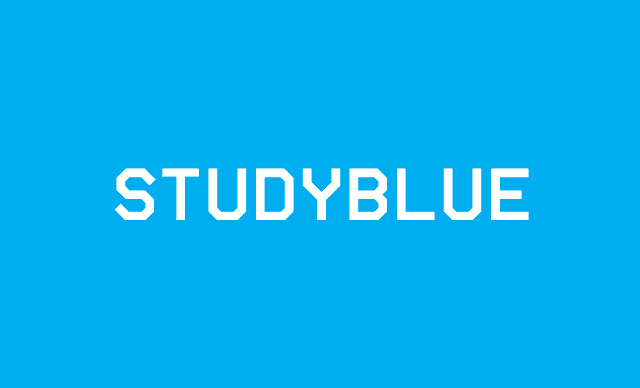
Study Blue is a great way for teachers out there to create additional materials for their students that can be used both inside and outside the classroom – which students can then take advantage of and create with too.
Basically, the Study Blue software allows for a user to create flashcards that are designed for assisting learning in and out of the classroom, with the goal in mind that studying becomes much easier and much more accessible to classes as a whole.
There are a couple of ways that a teacher could approach this as well. Theoretically, a teacher could develop a number of flashcards for their students based on each lesson that they give, so that the whole class has access to a plethora of materials ready to use once it comes time to study up for the major tests in a student’s academic career.
Alternatively, a teacher could just sign up all of their students to the service via their school emails, and direct them to the software as a study aid, encouraging collaborative learning and individual study through the use of technology that, as an added bonus, is accessible and readable on any device a student might want to use.
All of the flashcards are viewable, editable, and shareable too, so if you are looking to give feedback to your students on the cards they are developing, you can do, making this a great and easily manageable study aid for students in 2020.
EDpuzzle
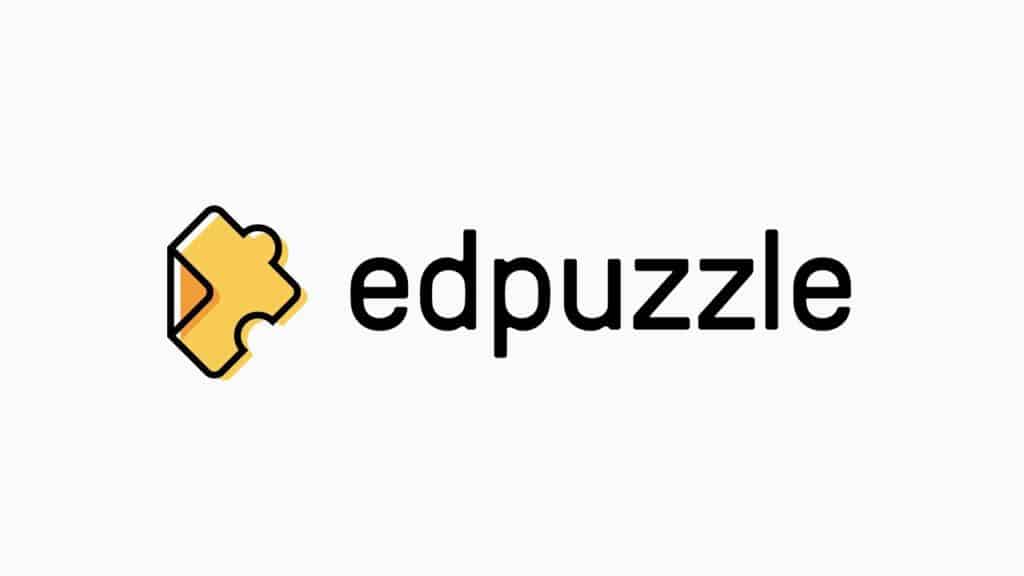
Edpuzzle might not be the first app that comes to mind when it comes to teaching, but it is a brilliant way of creating engaging materials for your classes that will keep your students engrossed in what you are saying and trying to teach them.
Basically, EDpuzzle allows a teacher to create interactive video lessons for their students using any video from YouTube, Khan Academy, Crash Course, and other hosting platforms. You select which video it is that you want to create a lesson out of, then you create a lesson out of it using whatever means you find suitable for the video at hand.
For example, if you are a science teacher and you find the perfect video of a biological event happening, but realize that it has no voiceover or description of the events happening, you can record your own voice over the video to educate students on the processes happening in real-time – and you can even pause the video so that students have to answer questions relating to their comprehension of what they have seen so far.
Its all impressive stuff, and it defiantly adds a lot of weight to the benefit of watching different videos in class, but the real benefit comes in the distribution of the EDpuzzle videos – you can send the completed materials out to students to complete in their own time (as homework) or as part of a class, and you will be delivered reports of what students are watching, where they are struggling and the definitive answers that they are providing to your questions, meaning that you are going to have a much better view of what your students do and don’t understand following the end of the video.
Pretty great stuff for some software based on internet videos, and a great way to turn free resources that you might find on YouTube into a much more rounded and beneficial educational tool than it might be on its own.
And that just about sums up the best educational technology available to use today – if you are confused about anything we have spoken about, or want to learn more about the range of tech and applications I have touched on in the article then just leave a comment below – we will try to get back to you with a definitive answer, and any possible contributions to our list could end up in the article itself!
